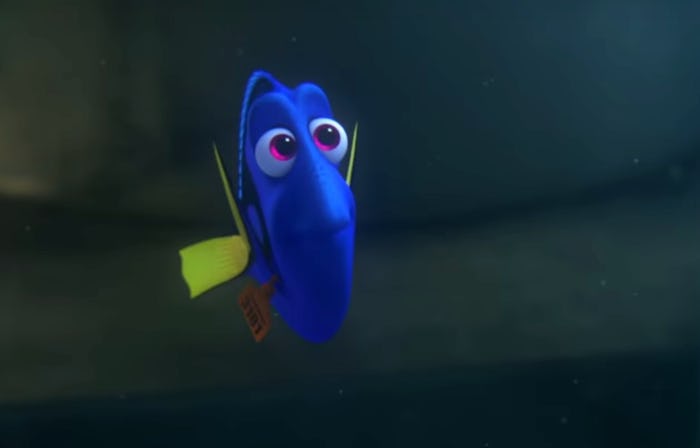Entertainment
Should You See ‘Finding Dory’ In 3-D? The Sequel Promises The Same Visual Magic As 'Nemo'
Finding Dory is one of the most highly-anticipated Pixar sequels of all time. It's been 13 years since animators introduced audiences to the plucky, playful blue tang voiced by Ellen DeGeneres. Now that she's got a movie of her own, fans can expect a deep dive into her personal history and a delightful reunion with her oceanic pals. For the most spectacular experience, should you see Finding Dory in 3-D? Though reviewers seem to appreciate the movie just as much in 2-D, there seems to be an added layer of magic that bubbles up when the glasses go on.
Pixar devotees may remember Finding Nemo's two releases: the original 2-D version in 2003 and a 3-D version in 2012, according to The Week. Though Finding Nemo's underwater scenes were breathtaking from the beginning, critics had mixed reactions to seeing them jump off the screen. Some felt it enhanced the visuals and sense of immersion. One critic wrote that it amplified emotions, perhaps making perilous parts of the movie too intense for young children. Others felt it didn't make much of a difference in the viewing experience at all. Owen Gleiberman, Chief Film Critic for Variety, had a similar take on the sequel, arguing that Finding Dory in 2-D is still dazzling: "Who needs 3-D glasses? Even if you happen to see 'Finding Dory' in 2-D, just about every shot in it pops out at you with beauty."
It's likely other critics agree with him; few reviews advocate specifically for one viewing experience over the other. Allison Shoemaker of Consequence of Sound may have made the strongest argument for seeing Finding Dory in 3-D:
In addition to being a wonderful piece of animation in general — no surprise, coming from Pixar — Finding Dory is also the rare film released in 3D that really should be seen in that way. There’s not a single instance of something needlessly popping out from the screen. Instead, for the bulk of the film, it’s easy to forget that you’re watching something in 3D, since it primarily adds depth to already vast settings.... When the 3D is used in a more typical sense, it’s employed so brilliantly and inventively that it makes an already hilarious (and moving) climax that much more affecting.
Whether in 2-D or 3-D, Finding Dory seems to be a must-see. In the movie, Dory's short-term memory loss is punctuated by snatches of recollection from her childhood, according to A.V. Club. Her realization that she has parents sets Dory off on an adventure to find them with Marlin and Nemo in tow. Jumping out of the ocean and into the Monterey Marine Life Institute, the movie welcomes new soon-to-be beloved characters into the Finding Nemo fold. But far from simply being a frothy return to a whimsical seascape, Finding Dory provides a powerful take on living with a disability. A. O. Scott of The New York Times wrote that Dory's memory loss propels her forward:
In a way that is both emphatic and subtle, 'Finding Dory' is a celebration of cognitive and physical differences. It argues, with lovely ingenuity and understatement, that what appear to be impairments might better be understood as strengths.
It's likely Finding Dory in 3-D offers a resonantly immersive experience. But based on the reviews, it's likely audiences will appreciate the sequel just as much in 2-D.
